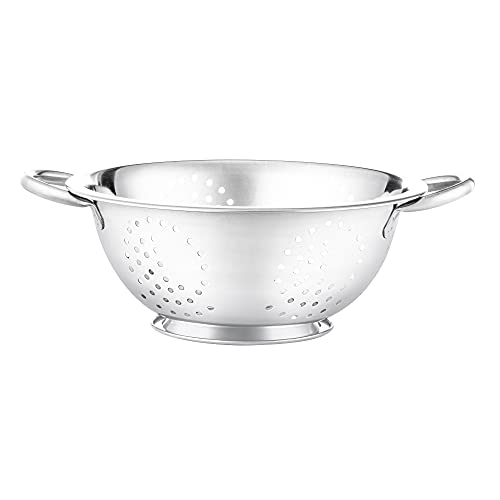What is a colander?
A colander is a kitchen utensil used for straining solid food from liquid. It is typically bowl-shaped and has small holes or perforations that allow the liquid to pass through while retaining the solid pieces.
What types of food can be strained using a colander?
Colanders can be used to strain a variety of foods, including pasta, rice, vegetables, and fruits. When cooking pasta or rice, a colander is typically used to drain the excess water after the food has been boiled. Vegetables and fruits can be placed in a colander to remove excess water, separate seeds or pulp, or to rinse them before cooking or serving.
Can a colander be used for other purposes?
While colanders are primarily used for straining food, they can also be useful for other tasks in the kitchen. In a pinch, a colander can be used as a makeshift steamer basket to cook vegetables, or as a mold for shaping foods like risotto or mashed potatoes into a desired shape. Some colanders even come with attachments that allow them to be used as a cutting board or to grate cheese.
What are some common materials used for colanders?
Colanders are typically made from metal, plastic, or ceramic materials. Metal colanders are the most common, with stainless steel being a popular choice due to its durability and longevity. Plastic colanders are lightweight and inexpensive, but may not withstand high temperatures or heavy use. Ceramic colanders are elegant and often used for serving or display purposes, but may be fragile and require extra care when handling.
How should a colander be cleaned and stored?
Colanders should be cleaned promptly after each use to prevent food from becoming stuck in the holes or perforations. They can be washed by hand with soap and warm water, or placed in the dishwasher for easy cleaning. After cleaning, colanders should be stored in a well-ventilated area to prevent moisture buildup, which can lead to the growth of mold or bacteria. Hanging a colander on a hook or placing it in a cabinet with good airflow are both good options for storage.






